Boston Ivy ( Parthenocissus tricuspidata ) is a wonderful way to cover up unsightly walls. This climber will cling to the bricks or cement by itself. The flowers are small and not very spectacular, but they do attract bees and other insects. The leaves are a lush shiny green during the warmer months. In autumn/ fall, the leaves turn a spectacular orange/red colour before dropping off, especially in cooler climates. This plant is related to Grapes, and is native to several Asian Countries including Japan. It grows well in the Sydney area, where i took this photo.
Authors get paid when people like you upvote their post.
If you enjoyed what you read here, create your account today and start earning FREE STEEM!
If you enjoyed what you read here, create your account today and start earning FREE STEEM!
It is one of the most preferred species of ivy.
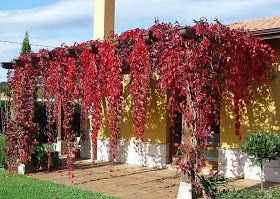
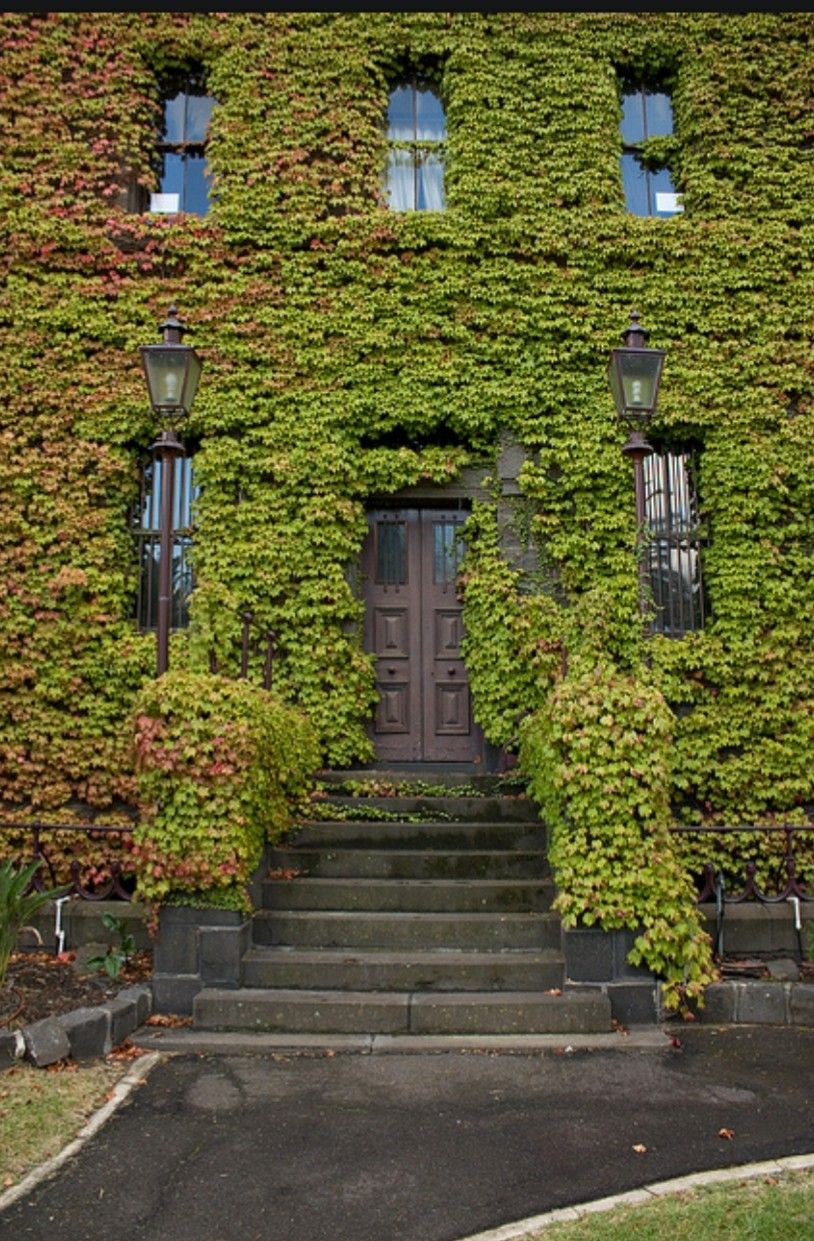
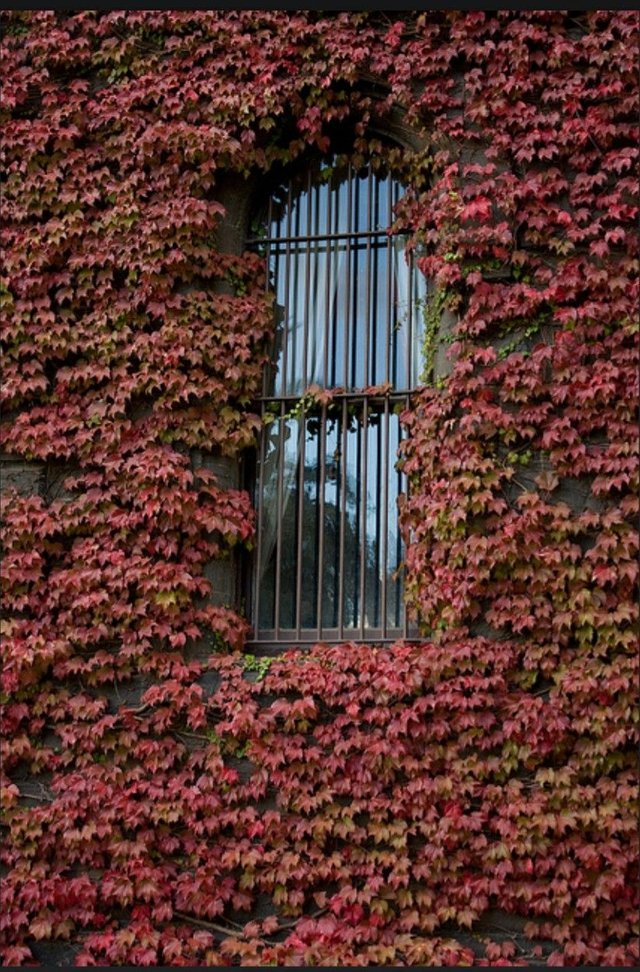
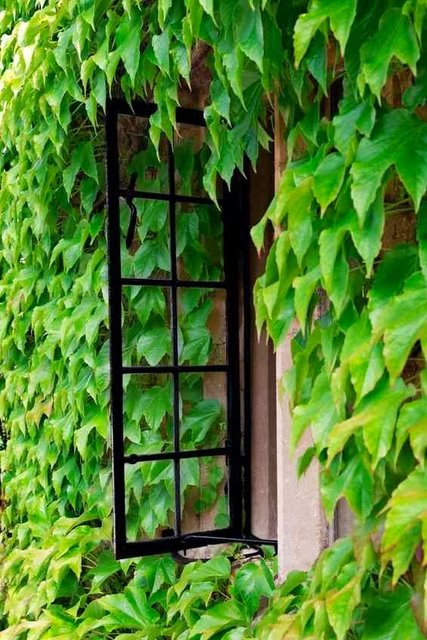
Emerald green leaves start to show up with spring.
The flowers that open in June are greenish or white in color, and in the fall the flowers turn into small, purple peasants with similar grapes.
It grows better in temperate and humid climates.
Extremely hot and arid environments can slow down the development process of American shrubs and destroy the habitat. They grow fast in the garden soil in sunny and bright places.
Irrigation and fertilizer maintenance are also carried out at suitable rates so that they develop much faster.
They can climb up to 15 meters. It is a long-lasting vine.
In the summer months, the green leaves surrounding the plant body take a red color in the autumn and display a fascinating image. American ivy is highly preferred for decorative autumn coloring.
Downvoting a post can decrease pending rewards and make it less visible. Common reasons:
Submit
The green vines produce insignificant flowers in early summer followed by black berries that birds enjoy. However, it’s the fall color that is most important. The leaves turn a red, orange, purple, or yellow color brightening up entire buildings with an autumn show. This deciduous vine can also be used as a ground cover to provide erosion control on slopes.
Boston ivy is hardy through our region. Plant vines purchased from a local garden center from spring to early fall in a part sun location for the best fall color. Boston ivy grows best on well-drained, loamy soils. In warmer areas, to prevent leaf scorch plant on an East-facing wall. Space plants 5 to 10 feet apart.
Boston ivy should be well watered when planted, but is drought tolerant once established. Mulch to conserve soil moisture and prevent weed growth. Boston ivy doesn’t need additional fertilization.
Make sure if planting Boston ivy on a wall you are sure you want it as a permanent fixture. Once established and clinging to the wall, it is difficult to remove. Also, it’s best to grow it up stonewall, chain link fence or masonry wall. Wooded walls will be hard to paint and may develop mold and rot due to the foliage of Boston ivy holding moisture against the wood. Boston ivy is salt spray tolerant so a good choice for homes along the coast. Boston ivy can also be used to creep along a bank or waste area to provide some erosion cover and color.
Downvoting a post can decrease pending rewards and make it less visible. Common reasons:
Submit
Smart idea for blogging by @ctrl-alt-nwo sir...
If you’re looking for a dense, deciduous vine to cover a wall or trellis, climb a tree, or hide landscape problems such as stumps and boulders, you should consider Boston ivy (Parthenocissus tricuspidata). These sturdy vines grow to lengths of 30 feet and give complete coverage to almost anything. They tolerate any light exposure, from full sun to full shade, and aren’t picky about the soil. You’ll find dozens of uses for this versatile vine. But what about keeping Boston ivy over winter?
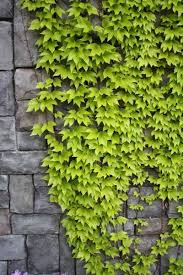.jpeg)
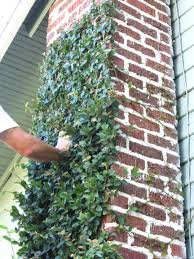.jpeg)
Boston Ivy Vines in Winter In fall, Boston ivy leaves begin a color transformation that goes from red to purple. The leaves cling to the vines longer than most deciduous plants, but eventually drop in early winter. After they fall, you can see the dark blue fruit. Called drupes, these berry-like fruit keep the garden lively in winter because they provide food for a number of songbirds and small mammals. Boston ivy winter care is minimal and consists primarily of pruning. First year vines may benefit from a layer of mulch, but older plants are very hardy and don’t need added protection. The vine is rated for USDA plant hardiness zones 4 through 8.
Does Boston Ivy Die in Winter?
Boston ivy goes dormant in winter and may look as though it is dead. It’s just waiting for changes in temperature and light cycles to signal that spring is on the way. The vine quickly returns to its former glory when the time is right. There are a couple of advantages to growing perennial vines like Boston ivy that lose their leaves in winter. While the vines grown against a trellis or pergola provide good shade from summer heat, they allow sunlight in once the leaves fall in winter. Bright sunlight can raise the temperature in the area as much as 10 degrees. If you grow the vine against a wall, it will help keep your home cool in summer and warm in winter. Winter Care of Boston Ivy Keeping Boston ivy over winter is easy as long as the temperature doesn’t typically drop below -10 F. (-23 C.) in your area. It doesn’t need winter feeding or protection, but it does need pruning in late winter. The vines tolerate hard pruning, and that is just what it needs to keep the stems in bounds. Besides controlling the growth of the vine, hard pruning encourages better flowering. Although you probably won’t notice the inconspicuous little flowers, without them you won’t have fall and winter berries. Don’t be afraid to make severe cuts. The vines regrow quickly in spring. Make sure you remove damaged and diseased parts of the vine as you prune. The vine sometimes pulls away from the supporting structure, and these stems should be removed because they won’t reattach. Vines may break under their own weight, and broken vines should be clipped and neatened.
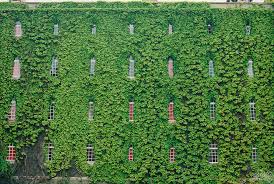.jpeg)
Wel done and execellent work sir...I'm always enjoy home garderning...
All the Best sir...
Downvoting a post can decrease pending rewards and make it less visible. Common reasons:
Submit
Noteworthy Characteristics
Parthenocissus tricuspidata, commonly called Boston ivy, is a rapid-growing, deciduous, woody vine that typically grows 30-50’ long or more. It is a vigorous tendril climber that needs no support. It clings to surfaces (e.g., brick, stone or wood walls) by adhesive holdfasts (also called sucker disks) located at the tendril ends. Although native to China and Japan, this ivy has been widely planted in the U.S., and is the ivy that covers the walls of many college/university buildings, giving rise in the Northeast to the name Ivy League. Species plants have dark green leaves (to 4-8” wide) in variable shapes but usually three lobed (sometimes in three leaflets). Greenish white flowers in late spring to early summer appear in the upper leaf axils, but are generally hidden by the foliage and are ornamentally insignificant. Flowers give way to blue-black berries (to 1/3” diameter) which are also hidden by the foliage and often not visible until autumn leaf drop. Birds eat the berries. Foliage turns scarlet red to scarlet purple in fall. Foliage is semi-evergreen in warm climates.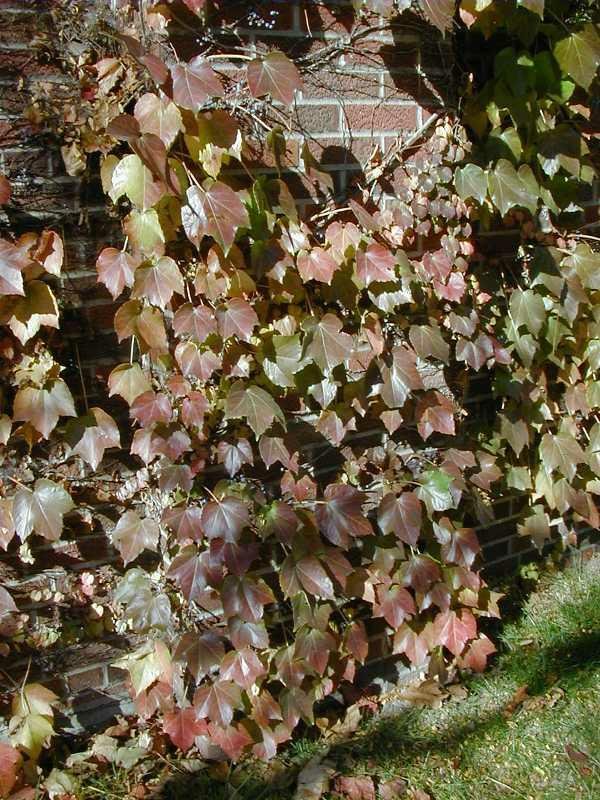
Synonymous with and formerly known as Ampelopsis tricuspidata.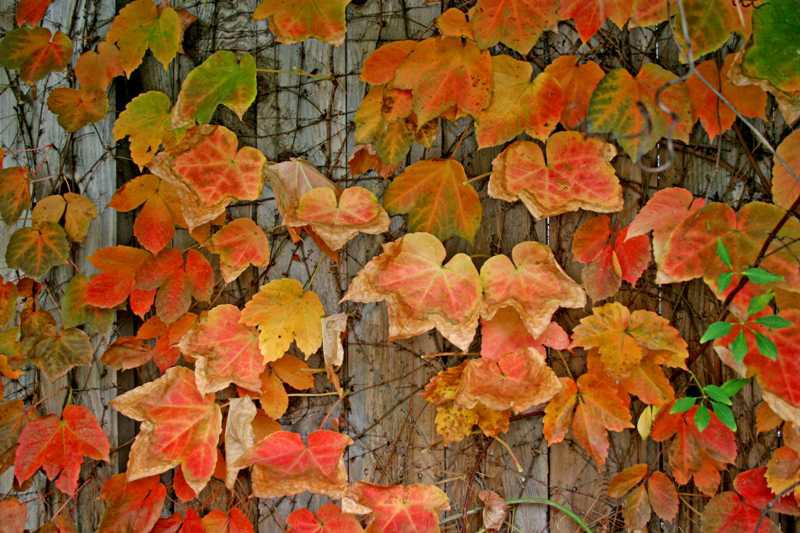
Genus name comes from the Greek words parthenos meaning a virgin and kissos meaning ivy.
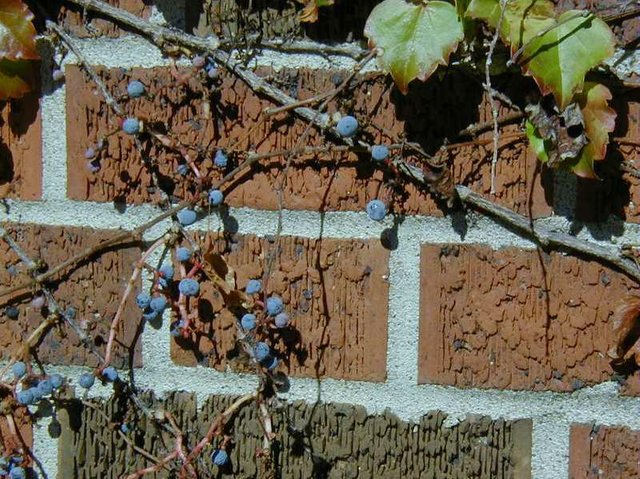
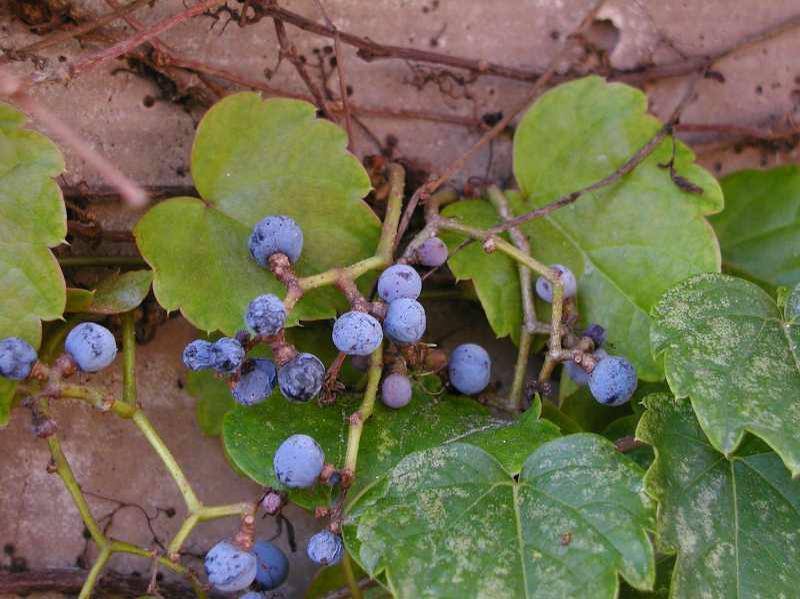
Specific epithet comes from the Latin words tri meaning three and cuspidatus meaning with a sharp point in reference to each plant leaf having three sharply-pointed lobes.
Problems
No serious insect or disease problems. Mildews, leaf spots, canker and wilt may occur. Potential insect pests include beetles, scale and leaf hoppers. Once attached to the side of a building or wall, this vine becomes difficult to remove and will damage painted surfaces and leave residues. This vine may invasively spread to nearby unmanaged areas.
Garden Uses
Excellent covering for walls, trellises, arbors or fences. May also be grown on the ground to cover old stumps, rock piles or other eyesores or for erosion control on slopes.
Downvoting a post can decrease pending rewards and make it less visible. Common reasons:
Submit
Boston ivy plants are perennial, deciduous, broadleaf vines. These plants are true climbers, attaching themselves to masonry and wooden surfaces using holdfasts.

The leaves typically turn green in summer, before reverting to a reddish color in fall. The plants produce inconspicuous flowers, yielding to clusters of dark blue berries. The vine length of mature plants may reach 50 feet or more.
Simply prune away any growth that is out of place (that is, either vines that are sticking out in an unsightly way or vines that have grown beyond the territory that you want them to cover). The vines respond well to pruning, so have no fear!
Downvoting a post can decrease pending rewards and make it less visible. Common reasons:
Submit
hi @ctrl-alt-now. ı am so new for steemit and its my first comment to you :) ı want to give a few informations about parthenocissus ( American ivy plant )
Analyzing the garden soil to which you will plant the American ivy plant and then fertilizing it according to the nutrient content of your soil is the right way to follow.
For fertilizing purposes; one liter of water from Tropical Plant Nutrient (for all plants), every two weeks in winter, once a week in summer, you will be spraying your root and then watering the fertile water to the root zone; it is sufficient for your plant growth and flower quality to increase.
American Clover (Parthenocissus quinquefolia) plant 14 cm. and in about 2 liters volume of poly ethylene packages, the peat + organic fertilizer mixture is planted in a mortar. The plants are about 100 cm in height with a pot. The American ivy plant does not leave between November and March when it is an ornamental plant in winter.
All of photo from Google !
Thanks for reading . Have a nice day ! @ctrl-alt-nwo
Downvoting a post can decrease pending rewards and make it less visible. Common reasons:
Submit
Your last pic is not the same plant, but similar.
Downvoting a post can decrease pending rewards and make it less visible. Common reasons:
Submit
The Boston Ivy should be well watered when planted but is drought tolerant once established on the soil. Mulch to conserve soil moisture and prevent weed growth.
Boston ivy doesn’t need fertilization.
The vine’s growth can be controlled by pruning in spring to reduce its size.
Prune to keep the ivy from getting under and lifting up the roof.
Boston ivy can be very invasive, so dig out any self-sown vines or vines that have rooted on the ground along the stems.
Scale insects are sometimes a big problem and can be controlled with horticultural oil sprays, you can find them on almost any garden store.
Downvoting a post can decrease pending rewards and make it less visible. Common reasons:
Submit
Wow...again smart green gardern post by @ctrl-alt-nwo sir...
Parthenocissus tricuspidata is a flowering plant in the grape family (Vitaceae) native to eastern Asia in Japan, Korea, and northern and eastern China. Although unrelated to true ivy, it is commonly known as Boston ivy, grape ivy, and Japanese ivy, and also as Japanese creeper, and by the name woodbine (though the latter may refer to a number of different vine species).
.jpeg)
Scientific classification
It is a deciduous woody vine growing to 30 m tall or more given suitable support, attaching itself by means of numerous small branched tendrils tipped with sticky disks. The leaves are simple, palmately lobed with three lobes, occasionally unlobed or with five lobes, or sufficiently deeply lobed to be palmately compound with (usually) three leaflets; the leaves range from 5 to 22 cm across. The flowers are inconspicuous, greenish, in clusters; the fruit is a small dark blue grape 5–10 mm diameter.
The specific epithet tricuspidata means three-pointed, referring to the leaf shape.
@ctrl-alt-nwo sir...Thank you so much sharing this post and waiting for your next update in this platform...
Cheers~~~
Downvoting a post can decrease pending rewards and make it less visible. Common reasons:
Submit
Botanical name: Parthenocissus tricuspidata
Common name: Boston Ivy
Family: Vitacea
Origin: Eastern Asia – Japan, Korea, North East China
Boston ivy is actually a native of China and Japan. An attractive vining plant, its glossy green leaves become red or purplish in autumn. The vine is named after the city where it's widely cultivated to decorate buildings. In particular, Boston ivy is known for gracing the Ivy League colleges. Planting ivy at the right time of year gives it a healthy start.
Boston ivy is hardy up to USDA hardiness zone 4 and grows in a variety of soils, from light sand to heavy clay, as long as the site is well drained. Boston ivy grows best in full sunlight and tolerates some light shade. However, it will not survive in full shade. Select the planting site carefully, taking note of nearby buildings and plants. As it matures, Boston ivy grows as high as 50 feet, climbing up buildings and available support structures, including trees.
Boston ivy is a fast grower; it is advisable to plant it at least 15 feet away from structures you don't wish to cover. The plant flowers in July to August. Flowers are pollinated by insects before reproduction begins. In October and November, the seeds created by the flowers are ripened. Seeds from Boston ivy may be harvested and cultivated to create additional ivy plants.
Thank you for the review.
Downvoting a post can decrease pending rewards and make it less visible. Common reasons:
Submit
Great comment, nice pics.
Downvoting a post can decrease pending rewards and make it less visible. Common reasons:
Submit
The ivy, which makes the walls of your house vinegar, can actually protect the building with its "thermal shield"!!
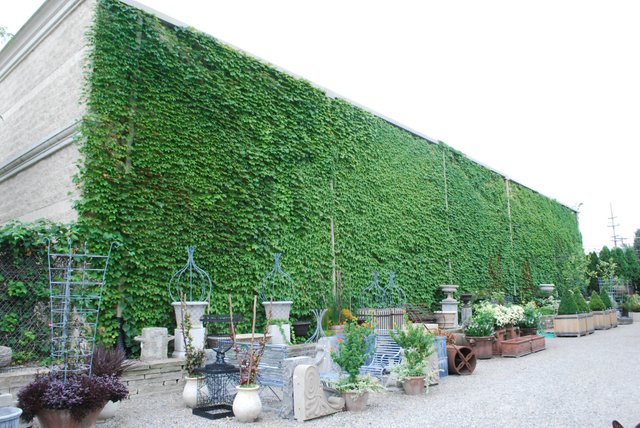
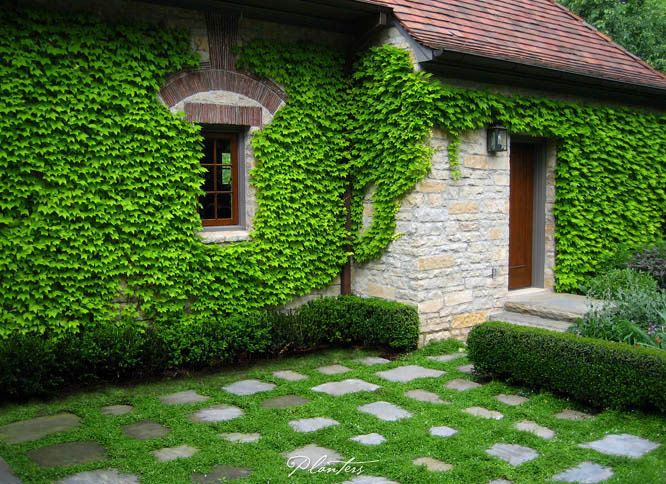
Scientists at Oxford University, where vines add color and character to the majority of college buildings, protect them positively, not on damaging walls.
They found ivy acted as a thermal blanket, warming up walls by 15 per cent in cold weather and cooling them in hot weather by an average 36 per cent.The study, funded by English Heritage, also found the shrub wards off water-related damage and absorbs some of the harmful pollutants in the atmosphere.
I mean, as you can understand, love nature, greenery! You love nature and protect it, nature loves you so much and protect you....I love green :))) @ctrl-alt-nwo
Downvoting a post can decrease pending rewards and make it less visible. Common reasons:
Submit
Parthenocissus tricuspidata is a flowering plant in the grape family (Vitaceae) native to eastern Asia in Japan, Korea, and northern and eastern China. Although unrelated to true ivy, it is commonly known as Boston ivy, grape ivy, and Japanese ivy, and also as Japanese creeper, and by the name woodbine (though the latter may refer to a number of different vine species).
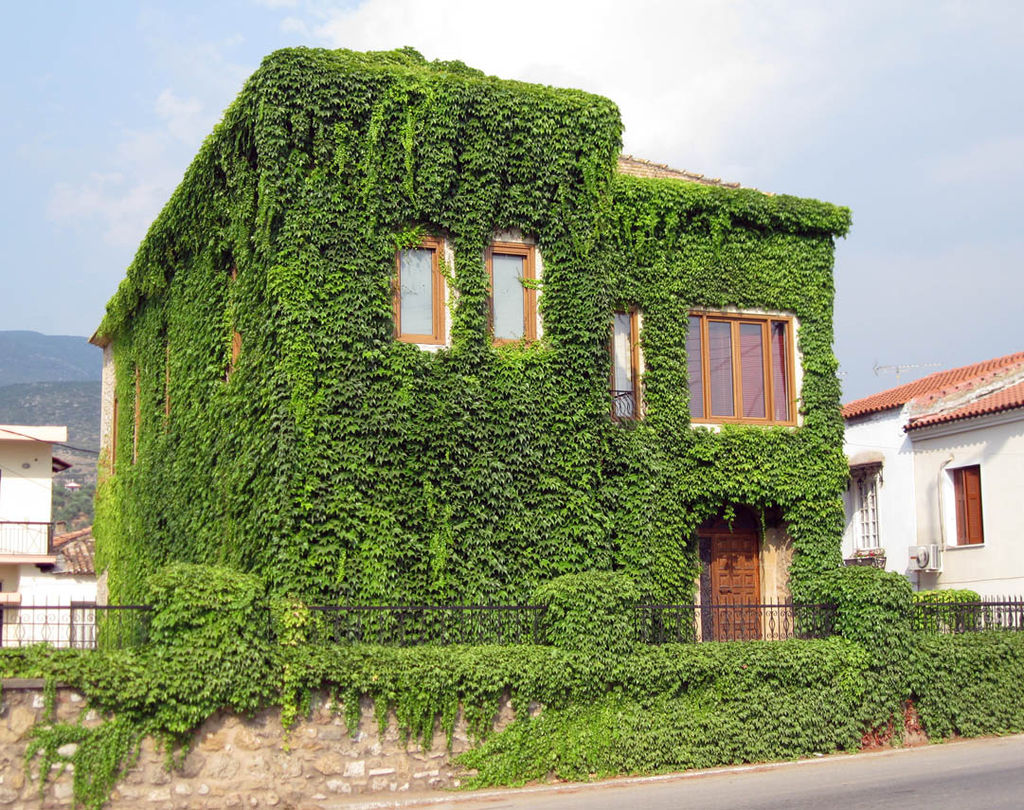.jpg)
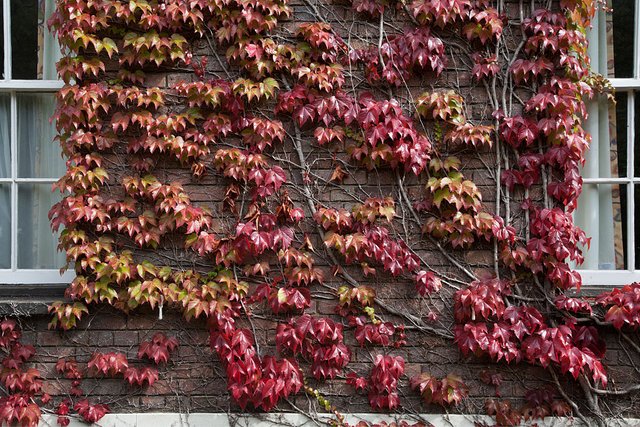 ![Ivy_on_Chicago_University_campus_building.jpg]
![Ivy_on_Chicago_University_campus_building.jpg]
It is a deciduous woody vine growing to 30 m tall or more given suitable support, attaching itself by means of numerous small branched tendrils tipped with sticky disks. The leaves are simple, palmately lobed with three lobes, occasionally unlobed or with five lobes, or sufficiently deeply lobed to be palmately compound with (usually) three leaflets; the leaves range from 5 to 22 cm across. The flowers are inconspicuous, greenish, in clusters; the fruit is a small dark blue grape 5–10 mm diameter
( )
)
this plant is widely grown as a climbing ornamental plant to cover the façades of masonry buildings. This usage is actually economically important because, by shading walls during the summer, it can significantly reduce cooling costs.
Boston Ivy is readily distinguished from the Virginia creeper by the simple leaves (always palmately compound with 5 leaflets in Virginia creeper).
The plant secretes calcium carbonate,[2] which serves as an adhesive pad and gives it the ability to attach itself to a wall without requiring any additional support. While it does not penetrate the building surface but merely attaches to it, nevertheless damage can occur from attempting to rip the plant from the wall. However, if the plant is killed first, such as by severing the vine from the root, the adhesive pads will eventually deteriorate to the point where the plant can be easily removed without causing any damage to the wall.
Source
Downvoting a post can decrease pending rewards and make it less visible. Common reasons:
Submit
Good information here.
Downvoting a post can decrease pending rewards and make it less visible. Common reasons:
Submit
Thank you so much for appreciation sir.
I'm honored.
Downvoting a post can decrease pending rewards and make it less visible. Common reasons:
Submit
Boston Ivy in the landscape
Native to China and Japan, this perennial vine is grown for its glossy green, sharply lobed leaves, which are arranged in overlapping tiers so dense that the support behind them disappears. The leaves of some varieties are purplish when young and may become veined or edged in pink as they mature. In fall Boston ivy turns brilliant red, and in winter the leafless stems draw interest with the lines they trace, stretching ever upward until they reach 18 metres (60 feet) in length.
Boston ivy fastens itself to a surface with adhesive, suckerlike pads called holdfasts. They cause no harm to brick, stone or stucco, but can hold moisture against wood surfaces, contributing to its decay. And, should you need to pull the vine down to paint a wooden structure, substantial work is involved in removing holdfasts and their residue from the wall.
Growing Boston ivy

Plant Boston ivy in spring in a partially shaded site.
It is not fussy about soil but grows vigorously in fertile soil high in organic matter, so amend the planting hole with leaf mold, compost or dried manure if your soil has a lot of clay or sand.
Keep the roots barely moist throughout the first growing season and in subsequent years when rainfall is lacking. Young vines may need some training to get them to climb until the holdfasts unfurl from the stems and touch the support.
Press the stems against the growing surface by propping them behind a brick, or a similar object. The stems will soon send out holdfasts to grab the wall on contact.
Don't let this vigorous vine, which grows several feet each year, get out of control.
Prune in any season to keep the vines away from eaves and window or door frames, and to contain size. Its thick leaves are an adequate deterrent to pests and diseases.
Thanks for the information
@ctrl-alt-nwo
100% like and resteem
Downvoting a post can decrease pending rewards and make it less visible. Common reasons:
Submit
Parthenocissus tricuspidata - grows like a weed. I bought it at a decent size (around 3' tall). All I really had to do was keep it from dying :)
They make decent houseplants anyway, if you keep it pruned. You need to give it lots of bright light, same as your herbs. They may hurt the brick of walls. It can and will damage brick over time. The way the ivy attaches itself to the brick is by rooting itself in the mortar and brick, creating small holes that will allow for water infiltration. This can cause cracking, spalling and mortar falling out.
Put your ear to the wall where it is planted. If the brick is in pain you'll be able to hear it screaming. Lol.
Below is the picture I have taken the last, I hope it grows as fast as the people number of comments increasing on this post. I wonder any of them truly loves gardening, they are just copying and pasting the content in order to gain an up vote from you. Anyway whatever you are doing for this amazing community and minnow is really appreciated, I would suggest you to host a real competition where participants has to do some activity related to planting or cleaning of the tree.
Downvoting a post can decrease pending rewards and make it less visible. Common reasons:
Submit
Thanks for your comment. Even thought many pics are copied and pasted, they still add to the quality of the post and also add to the info that a reader can gain from the post. Effort is still needed to find the pics, and many do write original comments, like you have. This is what i seek to reward.
Downvoting a post can decrease pending rewards and make it less visible. Common reasons:
Submit
Boston Ivy is a dense vine growing to 50+ feet and attaching itself by means of holdfasts (adhesive disks). This is the classic vine seen on buildings associated with "ivy league" schools.
The three parted leaves are a glossy green during the grown season and change to a brilliant red-orange in the fall.
It produces blue-black berries favored by birds. It grows in full sun to shade locations and will need attention to annual pruning in the spring to keep it from covering architectural features on structures.
Cultivars to look for are 'Fenway Park', a golden leaved form of Boston ivy and 'Lowii' a very small leaved and slower growing form for small space gardens.
Green showers offers lime-green foliage.
Downvoting a post can decrease pending rewards and make it less visible. Common reasons:
Submit
***@ctrl-alt-nwo, Wow that's pretty beautiful leaves indeed awesome plantation post. I'm very interesting every time reading your blogs. Boston Ivy is a deciduous vine with bluish fruits and bright red fall foliage. A member of the grape family, Boston Ivy is commonly used as a decorative addition for buildings. This means that it is most often used to grow on sections of buildings, walls, and fences for its aesthetic beauty. The glossy dark green leaves turn bright red in the fall. Showy leaves are held late into fall or early winter. This vine does well in poor soil and can grow in shade to full sun. While technically considered an invasive plant species, Boston Ivy's invasive tendencies are typically shortlived, as it often succumbs to native vines when dispersed out of controlled bounds. Boston Ivy has been grown everywhere from Fenway Park in Boston to Dallas, Texas. Boston Ivy is unique in how it attaches to structures and surfaces. Unlike true ivies, such as English Ivy that attach with invasive aerial rootlets that can severely weaken brick and wood structures, Boston Ivy attaches to surfaces with tendrils tipped with sticky disks. This means that that the plant effectively glues itself to structures without structurally damaging the surface. The adhesive forces are so strong that researchers with the Plant Biomechanics Group have taken notice. Because of this special quality, Boston Ivy is not only a safe addition to structures and buildings, but a wonderful energy saving plant - effectively shading buildings during the summer and allowing buildings to absorb heat during the winter thanks to its deciduous nature.
Leaves are alternate and simple, slender-stalked, broad-ovate, and 4-8" wide. They are 3-lobed with new growth being bronzish to reddish. Turning rich lustrous deep green in summer, leaves are a purple-red to crimson-red in fall. Usually Boston Ivy and Virginia Creeper are the first of all woody plants to color effectively in the autumn.
Source:
Downvoting a post can decrease pending rewards and make it less visible. Common reasons:
Submit
Older Leaves of Mature Vine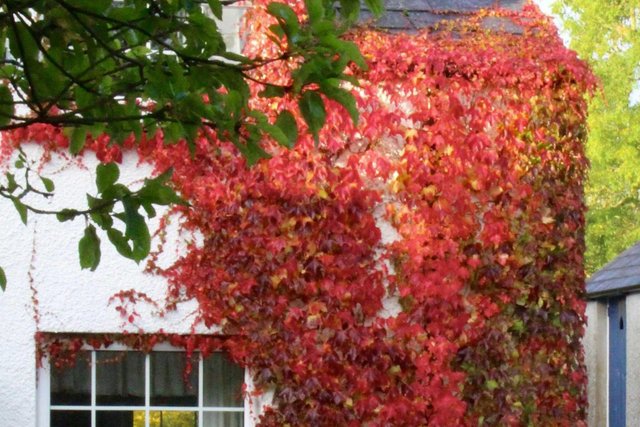
Occasionally, cymes of flowers are produced from the axils of the leaves. Each cyme can span up to 4" across and long. Each yellowish green flower is about ¼" across, consisting of 5 green petals, 5 stamens with yellow anthers, and a central pistil. The sepals are absent or insignificant. The blooming period occurs during the summer and lasts about 2-3 weeks. The flowers are usually well-hidden in the foliage. Each fertilized flower can produce a juicy berry about 1/3" (8 mm.) long that contains 1-3 seeds. The berries are dark blue with a whitish bloom and globoid in shape; their stalks are yellowish green, brownish green, or dull orange-red. The root system consists of a stout woody taproot.
Cultivation: Boston Ivy prefers full sun to light shade, slightly moist to slightly dry conditions, and a fertile loamy soil to support its rampant growth. It will tolerate soil containing clay or stony material. Flowers and berries are more likely to be produced if there is some exposure to sunlight.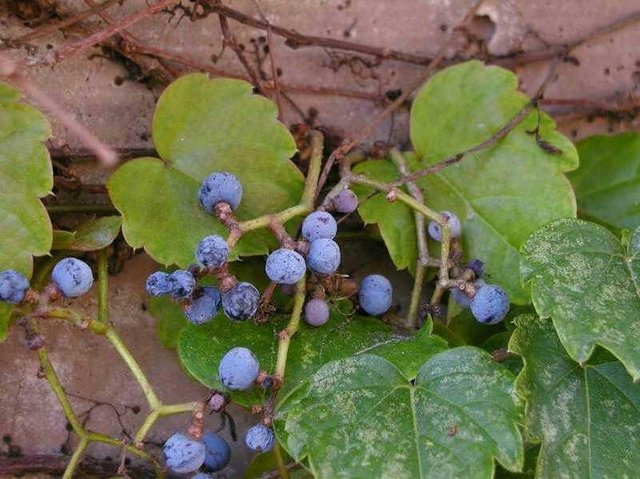
Range & Habitat: While commonly planted as an ornamental vine, the non-native Boston Ivy has rarely naturalized in the wild in Illinois. According to official records, it has naturalized in Hancock and Kane counties; the webmaster has observed escaped plants within the city of Urbana, Champaign County (see Distribution Map). Habitats include areas along railroadsCluster of Ripe Berries (including the gravel ballast) and areas along bridges. Boston Ivy is originally from East Asia. It is rather surprising that this introduced vine hasn't naturalized in more areas of the state, as it is a rampant grower and produces berries readily. However, some cultivars may be more productive of flowers and berries than others.
@source
Downvoting a post can decrease pending rewards and make it less visible. Common reasons:
Submit
this man thought the house was ugly then :) the ivy plant allowed the house to be wrapped. The house disappeared! This photo was taken in turkey rize
Downvoting a post can decrease pending rewards and make it less visible. Common reasons:
Submit
What a great house !
Downvoting a post can decrease pending rewards and make it less visible. Common reasons:
Submit
Really interesting plant, with its help you can solve for a while the issue with repair :). Thank you for the interesting post.
Downvoting a post can decrease pending rewards and make it less visible. Common reasons:
Submit
I know this plant very well. It grows over here in Southern Nigeria especially during the wet season. You'll mostly find it around abandoned and cold humid areas growing on walls and fences.
I've never like it before cus I see it as a good breeding ground for snakes .I think I need to change my perspective about it cus I used to see it as a wild weed with no purpose.
And oh! It's a good place to get some butterflies pictures if you want to
Downvoting a post can decrease pending rewards and make it less visible. Common reasons:
Submit
Be nice to Snakes, i love them.
Downvoting a post can decrease pending rewards and make it less visible. Common reasons:
Submit
@ctrl-alt-nwo,
Yeah as you said they are nice cover the fences and walls! Great photography and an article!
Cheers~
Downvoting a post can decrease pending rewards and make it less visible. Common reasons:
Submit
Only a true Botanist can differentiate between these three plants:

Virginia Creeper
Poison Ivy
This is a very useful article on this topic:
Boston Ivy Vs Virginia Creeper
Happy Steeming!
Downvoting a post can decrease pending rewards and make it less visible. Common reasons:
Submit
This climber is really very good as a camouflage or as a curtain for privacy and hiding an old building! This plant must be quite old to spread so wide! Love to see the leaves changing colour in autumn!
Is the sap of Boston Ivy poisonous?
But this will work for some location. Here, if we have a bush like this, we will certainly find several snakes hiding inside!
Thank you for sharing!
Downvoting a post can decrease pending rewards and make it less visible. Common reasons:
Submit
As far as i know it is not posionous, but you would not eat it. Be nice to Snakes, they're cool.
Downvoting a post can decrease pending rewards and make it less visible. Common reasons:
Submit
Thank you for your reply! It's good to know that this climber is not poisonous. I am not afraid of snakes like my gardener and most villagers I know! I would just tell them to go their way. Now we have a small family of green snakes in my garden! They are poisonous but they are not aggressive.
Cheers.
Downvoting a post can decrease pending rewards and make it less visible. Common reasons:
Submit
I think people have posted so much about Boston Ivy so not much left for my contribution. :) So, I won't repeat what has already been shared. Did some research and found this creative gif:
Downvoting a post can decrease pending rewards and make it less visible. Common reasons:
Submit
A beautiful plant and very correctly seen that it is great for improving the walls of buildings! Thank you @ctrl-alt-nwo
Downvoting a post can decrease pending rewards and make it less visible. Common reasons:
Submit
Boston ivy plants is so nice its leaves are full green and create an awesome view for viewers It can create cooling effects and also cover the walls very beautifully it looks so nice.
These are ever green are only remain in seasons ???
leaves are these are shaing and have cooling effects for viewers Thanks for sharing keep it up
you also have a great skills to capture it you captured it in a rihgt direction thanks for introducing us
Downvoting a post can decrease pending rewards and make it less visible. Common reasons:
Submit
They're not evergreen, they are deciduous.
Downvoting a post can decrease pending rewards and make it less visible. Common reasons:
Submit
This are very beautiful i did not know about this nor i see any where around me i first time see this i will try to use it in my own house
Downvoting a post can decrease pending rewards and make it less visible. Common reasons:
Submit
It's so amazing plant...!👌 really liked it... ☺
heres one of the flowers pic of my garden...☺
Downvoting a post can decrease pending rewards and make it less visible. Common reasons:
Submit
Nice Bougainvillea !
Downvoting a post can decrease pending rewards and make it less visible. Common reasons:
Submit
very creative and interesting, this might be an inspiration to those who see it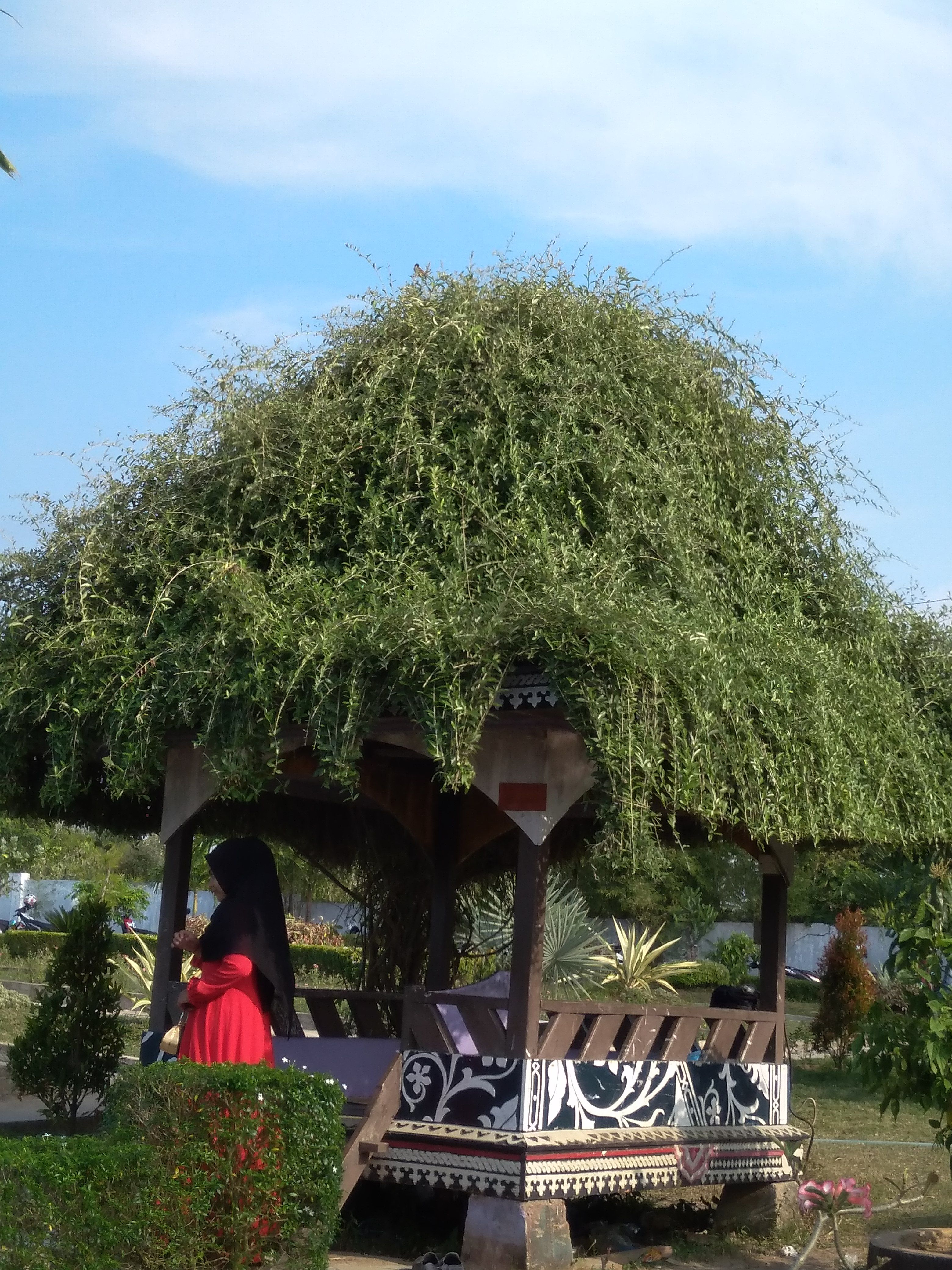
Downvoting a post can decrease pending rewards and make it less visible. Common reasons:
Submit
Wow !!! Boston-ivy
Boston ivy plants are attractive, climbing vines that cover outer walls of many older buildings, particularly in Boston.
the new leaves of Boston ivy are reddish. The leaves typically turn green in summer, before reverting to a reddish color in fall.
Nice informative post..
Downvoting a post can decrease pending rewards and make it less visible. Common reasons:
Submit
Awww i love greenry and nature
Downvoting a post can decrease pending rewards and make it less visible. Common reasons:
Submit
great idea to cover walls
Downvoting a post can decrease pending rewards and make it less visible. Common reasons:
Submit
Rrally it is wonderful way to cover up unsightly walls.
Thanks for sharing this wonderdul way.
upvote & resteem done.
Downvoting a post can decrease pending rewards and make it less visible. Common reasons:
Submit
nice photography is that your house garden....?
Downvoting a post can decrease pending rewards and make it less visible. Common reasons:
Submit
No, not mine.
Downvoting a post can decrease pending rewards and make it less visible. Common reasons:
Submit
these are taken by me
Downvoting a post can decrease pending rewards and make it less visible. Common reasons:
Submit
Nice Violas and Petunias, but they are not Boston Ivy.
Downvoting a post can decrease pending rewards and make it less visible. Common reasons:
Submit
Parthenocissus tricuspidata is a flowering plant in the grape family (Vitaceae) native to eastern Asia in Japan, Korea, and northern and eastern China. Although unrelated to true ivy, it is commonly known as Boston ivy, grape ivy, and Japanese ivy, and also as Japanese creeper, and by the name woodbine (though the latter may refer to a number of different vine species).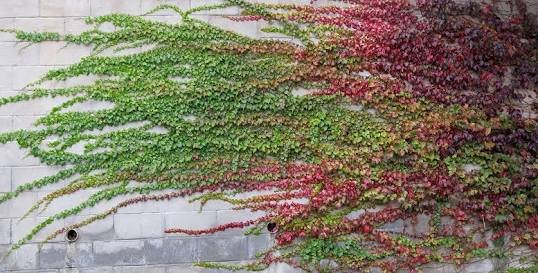.jpeg)

Chinese name
Traditional Chinese
爬牆虎
Simplified Chinese
爬墙虎
Literal meaning
"wall-climbing tiger"
Transcriptions
Standard Mandarin
Hanyu Pinyin
It is a deciduous woody vine growing to 30 m tall or more given suitable support, attaching itself by means of numerous small branched tendrils
Downvoting a post can decrease pending rewards and make it less visible. Common reasons:
Submit
I never bored while i am reading your post. You know how to present a subject in a simple & interesting way. Its nice to seen all that green around the house. Thank you so much for the photographs & the information.
Downvoting a post can decrease pending rewards and make it less visible. Common reasons:
Submit
Boston Ivy is Really very beautiful. This is the blanket of wall. Blanket of wall is logical name. Really this is a unique name. This name is given by you? It may be called dress of wall. Nice photography and fascinating word in your description really impressed me.
Downvoting a post can decrease pending rewards and make it less visible. Common reasons:
Submit
Yes, that was my idea.
Downvoting a post can decrease pending rewards and make it less visible. Common reasons:
Submit
Nice climbers you got there. Good to protect your house from neighbours and make it more green and eco.
Downvoting a post can decrease pending rewards and make it less visible. Common reasons:
Submit
@ctrl-alt-nwo - Sir
Boston Ivyis a useful plant for our gardens... Low cost solution for a garden walls... Nice you decided to share it Sir...+W+
Downvoting a post can decrease pending rewards and make it less visible. Common reasons:
Submit
Great information @ctrl-alt-nwo
parthenocissus is a great way to trim wals.
I have collected some information about parthenocissus
Common Name(s):Virginia creeperCultivar(s):Engelmann Ivy, MuroruCategories:Groundcover, Native Plants, Poisonous Plants, Vines
Description:Climbing vine with tendrils with adhesive tips; leaves alternate, palmately divided with 5 toothed leaflets; flowers small and inconspicuous; fruit a dark blue berry in a terminal clusterHeight:30-50 ft.
Flower:Inconspicuous flowers, waxy blue-black berriesZones: 6-9
Habit:DeciduousTexture:CoarseExposure:Sun to partial shadeFruit:blue-black berries attract birdsFamily:VitaceaeOrigin:USA, NCDistribution:ThroughoutPoison Part:BerriesPoison Delivery
Mode:IngestionSymptoms:Nausea, abdominal pain, bloody vomiting and diarrhea, dilated pupils, headache, sweating, weak pulse, drowsiness, twitching of faceToxic Principle:Oxalic acid and possibly others
Severity:HIGHLY TOXIC, MAY BE FATAL IF EATEN!Found in:Forest or natural area, in woods, fields; weedy in disturbed areas; in landscape cultivated as an ornamental, climbing woody vineGrowth
Downvoting a post can decrease pending rewards and make it less visible. Common reasons:
Submit
So beautiful garden, thanks for sharing
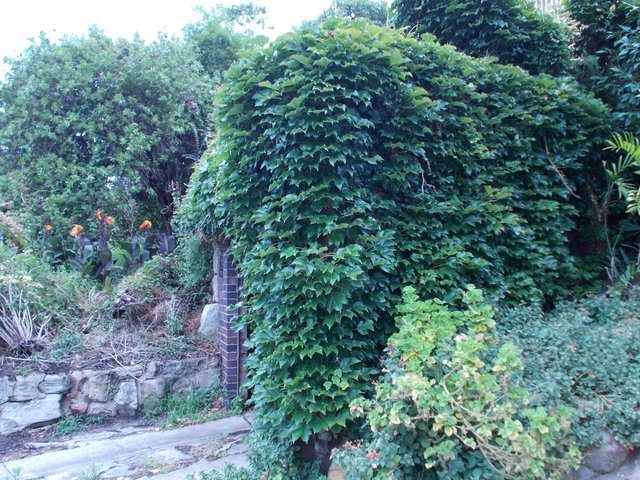
Resteem
Downvoting a post can decrease pending rewards and make it less visible. Common reasons:
Submit
this has to be my favourite plant it always makes me happy :D
Downvoting a post can decrease pending rewards and make it less visible. Common reasons:
Submit
OMG! I used to see those climbers in movies surrounding the walls of castle and grand mansions. I'm glad that I followed you or else I would have never know about this info. Thank you so much. I admire your efforts and enthusiasm.
Downvoting a post can decrease pending rewards and make it less visible. Common reasons:
Submit
A beautiful plant and very correctly seen that it is great for improving the walls of buildings! Thank you for this❤️
Downvoting a post can decrease pending rewards and make it less visible. Common reasons:
Submit
i saw this plant before, but today is the 1st date i found the name. impressive article & excellent photography @ctrl-alt-nwo
@resteemia
reteemed & upvoted
Downvoting a post can decrease pending rewards and make it less visible. Common reasons:
Submit
covering up the house walls with that is a cool idea this is really fun to do :)
Downvoting a post can decrease pending rewards and make it less visible. Common reasons:
Submit
Well @ctrl-alt-nwo as far as the parthenocissus is concerned this plant is so common here too and yes it provides basically two functions
1- Enhances the beauty of the walls
2- Covers the walls and hide everything under it
I am so happy to see immense traffic on your blog and this is so wonderful that you manage to read all the comments, Awesome <3
PS: i am writing a bit late due to my illness, Apologies
Downvoting a post can decrease pending rewards and make it less visible. Common reasons:
Submit
Boston Ivy Such a Wonderful place to live.
Downvoting a post can decrease pending rewards and make it less visible. Common reasons:
Submit
Nice place you live at this was quite stunning to see looking wonderful :)
Downvoting a post can decrease pending rewards and make it less visible. Common reasons:
Submit
Boston Ivy is so cool that it has many story related to it also one of the most loved plant i guess
Downvoting a post can decrease pending rewards and make it less visible. Common reasons:
Submit
this green blanket is the most coolest blanket one could get from nature and it looks amazing :)
Downvoting a post can decrease pending rewards and make it less visible. Common reasons:
Submit
it does look very nice! i love the form of leaves :)
Downvoting a post can decrease pending rewards and make it less visible. Common reasons:
Submit
Lots of interesting information to grasp from this post steemians did a great job too thanks for posting
Downvoting a post can decrease pending rewards and make it less visible. Common reasons:
Submit
Herb: Boston Ivy
Some Quick Facts
Latin name: Parthenocissus tricuspidata
Synonyms: Ampelopsis tricuspidata, Ampelopsis veitchii
Family: Vitaceae (Grape Family)
Habitat: Thickets and woods in hills and mountains
Height: 18 m
Edible Parts: Sap
Downvoting a post can decrease pending rewards and make it less visible. Common reasons:
Submit
Fantastic garden and really look
Resteem
Downvoting a post can decrease pending rewards and make it less visible. Common reasons:
Submit
Boston ivy is a perennial, even an ivy of life. The leaf-like leaves are reddish in the autumn and fall in winter. The bright green leaves are covered with wonderful red colors in the autumn, and your garden occupies a very nice hazan season. Boston ivy leaves a full visual color feast in the gardens, with yellow, orange, then copper, and finally red and spruce-colored leaves soon turning to myrrh. Summer tiny green flowers turn into similar purple grapes that sag in the fall. The plant is very popular for its fruity birds, but it is poisonous to humans.
Downvoting a post can decrease pending rewards and make it less visible. Common reasons:
Submit
wonderful idea you just gave to cover up walls naturally it is looking cool too thanks for sharing and suggesting
Downvoting a post can decrease pending rewards and make it less visible. Common reasons:
Submit
Wonderful plants review for trim any walls.And really beautiful photography.
Thanks @ctrl-alt-nwo for sharing.
upvoted+resteemed
Downvoting a post can decrease pending rewards and make it less visible. Common reasons:
Submit
Excellent photography.And your post is really useful for makeing a beautiful garden.
thanks for sharing @ctrl-alt-nwo
100% upvote & resteem done
Downvoting a post can decrease pending rewards and make it less visible. Common reasons:
Submit
Beautiful plants photography.I really find this type plant for cover up my wall.
Thanks for sharing dear.
100% like + resteem done.
Downvoting a post can decrease pending rewards and make it less visible. Common reasons:
Submit
Boston ivy is also known as Parthenocissus tricuspidata.It is a deciduous woody vine growing to 30 m tall or more given suitable support, attaching itself by means of numerous small branched tendrils tipped with sticky disks. It is also called as grape ivy, and Japanese ivy.
Downvoting a post can decrease pending rewards and make it less visible. Common reasons:
Submit
Really beautiful.garden.I really like this type garden.
Thanka for sharing.
100% upvote & resteem done.
Downvoting a post can decrease pending rewards and make it less visible. Common reasons:
Submit
wonderful plants my friend,and nice photo, good job ;)
Downvoting a post can decrease pending rewards and make it less visible. Common reasons:
Submit
This very beautiful garden and beautiful photography
thanks @ctrl-alt-nwo
Have a great day
Downvoting a post can decrease pending rewards and make it less visible. Common reasons:
Submit
Wow its really beautiful and amazing photography. Such a wonderful post. Keep it up. Wish you avery happy and bright future.
Downvoting a post can decrease pending rewards and make it less visible. Common reasons:
Submit
wonderful plants garden photography, i love your all post, thanks for sharing...@ctrl-alt-nwo
Downvoting a post can decrease pending rewards and make it less visible. Common reasons:
Submit
great plant it always

Downvoting a post can decrease pending rewards and make it less visible. Common reasons:
Submit
thanks for updating about very beautiful and amazing plant it is really informative post thanks for sharing.
Downvoting a post can decrease pending rewards and make it less visible. Common reasons:
Submit
Downvoting a post can decrease pending rewards and make it less visible. Common reasons:
Submit
Wow amazing & beautiful Garden.
For your post propagation.
Upvote/Resteem
Downvoting a post can decrease pending rewards and make it less visible. Common reasons:
Submit
the evergreen plant which is so bright and vivid to be seen everywhere so cool to see this :)
Downvoting a post can decrease pending rewards and make it less visible. Common reasons:
Submit
nice post. ...ccoll
Downvoting a post can decrease pending rewards and make it less visible. Common reasons:
Submit
this is looking fabulous to check out wonderful to see this looking excellent and great information along
Downvoting a post can decrease pending rewards and make it less visible. Common reasons:
Submit
Wow Nice post you are great..
Downvoting a post can decrease pending rewards and make it less visible. Common reasons:
Submit
Great way @ctrl-alt-nwo
as you saw that it is the best way cover up unsightly walls.
Thanks for sharing .
upvote and resteem done.
Downvoting a post can decrease pending rewards and make it less visible. Common reasons:
Submit
Nice post @ctrl-alt-nwo
And Wonderful picture.Really good post.
Thanks for sharing
Downvoting a post can decrease pending rewards and make it less visible. Common reasons:
Submit
wonderful post dear @ctrl-alt-nwo good job keep it up......
Downvoting a post can decrease pending rewards and make it less visible. Common reasons:
Submit
You green garden photography is really awesome.And your picture quallity is good.I like green garden @ctrl-alt-nwo
Thanks for sharing.
Downvoting a post can decrease pending rewards and make it less visible. Common reasons:
Submit
Nice post.And excellent photography.
Thanks for sharing.
Downvoting a post can decrease pending rewards and make it less visible. Common reasons:
Submit
Very great photos you showed from there it is very interesting to see :)
Downvoting a post can decrease pending rewards and make it less visible. Common reasons:
Submit